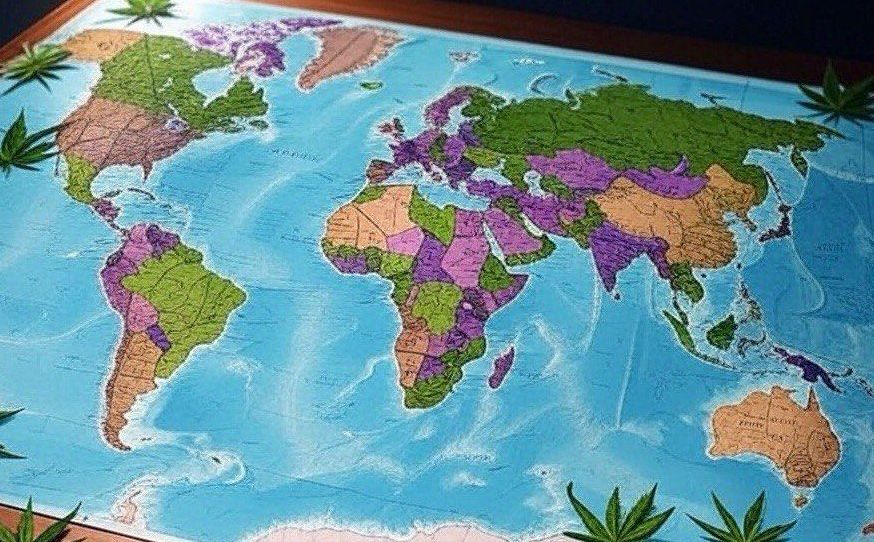Global Overview of Medical Marijuana Laws
Where Medical Marijuana Stands Worldwide in 2025
Medical marijuana’s legal status varies dramatically across the globe, reflecting a complex interplay of cultural, political, and scientific factors. At Weedcoin, we’re dedicated to helping patients understand these laws through the MediWeed Hub with irie vibes. In this article, we’ll provide a detailed overview of where medical marijuana stands in 2025, from progressive regions to those with strict prohibitions. Whether you’re exploring options for treatment or advocating for change, this guide will give you a global perspective—let’s dive into the worldwide landscape of medical cannabis laws!

As of 2025, medical marijuana is legal in over 50 countries, but the scope of legalization, qualifying conditions, and access mechanisms differ significantly. Here’s a comprehensive look at the global legal landscape, drawing on insights from State Medical Cannabis Laws and other trends.
United States: A Patchwork of State Laws
In the U.S., 38 states, plus Washington, D.C., have legalized medical marijuana, covering over 70% of the population. States like California, Colorado, and Oregon have robust programs with licensed dispensaries, patient registries, and a wide range of qualifying conditions, including chronic pain, epilepsy, cancer, and PTSD. For example, Maryland’s program allows patients to register and purchase from dispensaries after obtaining a doctor’s recommendation. However, the federal government still classifies cannabis as a Schedule I drug under the Controlled Substances Act, meaning it’s considered to have no medical use and a high potential for abuse. This federal illegality creates a “policy mismatch,” where state-legal patients risk federal penalties, especially when traveling interstate or accessing federal benefits like housing or employment.
Canada: Federal Legalization with Medical Focus
Canada legalized medical marijuana in 2001 under the Marihuana for Medical Purposes Regulations, later replaced by the Cannabis Act in 2018, which also legalized recreational use. Patients with a medical need can access cannabis through licensed producers, grow their own (up to 150 grams per household), or purchase from dispensaries. Qualifying conditions are broad, determined by healthcare providers, and include chronic pain, nausea from chemotherapy, and epilepsy. Canada’s federal framework ensures consistency across provinces, but patients still face challenges like high costs and limited insurance coverage, as most plans don’t cover medical cannabis.
Europe: Gradual Acceptance with Restrictions
Europe has seen gradual acceptance of medical marijuana, though regulations vary. Germany legalized medical cannabis in 2017, allowing doctors to prescribe it for conditions like multiple sclerosis, chronic pain, and epilepsy, with products dispensed through pharmacies. However, access is limited by high costs—patients often pay out-of-pocket, as public health insurance rarely covers cannabis. The UK legalized medical cannabis in 2018, but prescriptions are rare, typically limited to severe epilepsy (e.g., Epidiolex for Dravet syndrome) or chemotherapy-induced nausea. Italy permits medical cannabis for similar conditions, but bureaucratic hurdles and stigma hinder access. Other countries like Spain and France allow limited use, often through compassionate programs or CBD-only products, reflecting a cautious approach.
Australia and Oceania: Emerging Markets
Australia legalized medical marijuana in 2016, focusing on conditions like epilepsy, chronic pain, and cancer symptoms. Patients need a doctor’s prescription and approval from the Therapeutic Goods Administration (TGA), with products dispensed through pharmacies. Despite legalization, access remains challenging due to high costs, limited supply, and strict regulations—many patients turn to illegal markets. New Zealand followed suit in 2020, allowing medical cannabis for terminal illnesses and chronic conditions, but implementation is slow, with similar access barriers.
Latin America: Progressive Steps in Some Regions
Latin America has made strides in medical marijuana legalization. Uruguay was the first country to fully legalize cannabis (medical and recreational) in 2013, allowing patients to access products through pharmacies or grow their own. Colombia legalized medical cannabis in 2016, becoming a major exporter of medical-grade products, though domestic access for patients remains limited due to regulatory delays. Mexico legalized medical marijuana in 2017, focusing on conditions like epilepsy and pain, but implementation has been slow, with few products available legally.
Asia and the Middle East: Strict Prohibitions
Most of Asia and the Middle East maintain strict prohibitions on cannabis, even for medical use. Countries like Singapore, Saudi Arabia, and Malaysia classify cannabis as a Schedule I drug, with severe penalties for possession, including imprisonment or the death penalty in extreme cases. Japan allows limited CBD products for research but bans THC entirely, reflecting cultural resistance to cannabis. However, Thailand has emerged as an outlier, legalizing medical marijuana in 2018 and becoming the first Southeast Asian country to do so. Patients can access cannabis for conditions like cancer and epilepsy, and the government is promoting cannabis as a cash crop, though access for rural patients remains limited.
Africa: Early Stages of Legalization
Africa is in the early stages of medical marijuana legalization. South Africa decriminalized private cannabis use in 2018 and allows medical prescriptions for conditions like chronic pain, but a formal medical program is still developing. Lesotho has become a hub for medical cannabis cultivation, exporting to Europe and Canada, though domestic patients have little access. Zimbabwe legalized medical cannabis in 2018 for research and limited medical use, but implementation is slow due to regulatory and economic challenges.
International Frameworks and Trends
International treaties, like the 1961 UN Single Convention on Narcotic Drugs, historically classified cannabis as a Schedule I drug, restricting medical use. However, the UN’s 2020 reclassification of cannabis to Schedule IV acknowledged its medical value, encouraging countries to explore legalization. The World Health Organization (WHO) has also recommended easing restrictions on CBD, leading to more countries allowing non-psychoactive cannabis products. Despite these shifts, enforcement varies—many countries remain bound by cultural stigma or political resistance, slowing global progress.
Practical Tips:
- Use government websites or the MediWeed Hub to check if medical marijuana is legal in your country or region.
- Identify qualifying conditions in your area—chronic pain, epilepsy, and cancer are common, but requirements vary.
- Understand federal vs. local laws, especially in the U.S., to avoid legal risks when traveling.
- Research international treaties like the UN’s 2020 reclassification to advocate for change in restrictive regions.
- Join Weedcoin’s community on X to stay updated on global legalization trends and share your experiences.
Key Takeaways:
- Medical marijuana is legal in over 50 countries, including 38 U.S. states, Canada, and parts of Europe, but federal illegality in the U.S. creates challenges.
- Canada and Uruguay have federal medical programs, while Europe (e.g., Germany, UK) is more restrictive with high costs.
- Asia and the Middle East largely prohibit cannabis, though Thailand is an exception, legalizing in 2018.
- Africa and Latin America are emerging markets, with countries like South Africa and Colombia taking early steps.
- The UN’s 2020 reclassification is driving global change, but cultural and political barriers remain.













